Brexit market impact and outlook for farming sectors
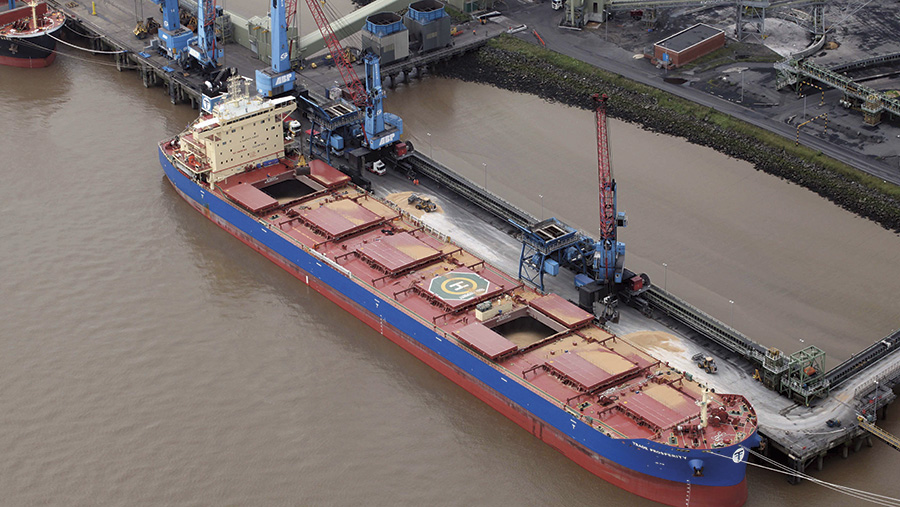
Most farm output markets have seen a small positive reaction to the UK’s vote to leave the EU, with a fall in the pound making our produce more affordable in export markets.
As the pound continues to weaken, these short-term farmgate price gains are growing.
However the longer term issues of market access, along with European and wider global economic prospects will play increasingly important roles in determining the fortunes of UK agriculture.
Here we look at the impact so far and some of the factors that will affect farming’s future.
Wheat
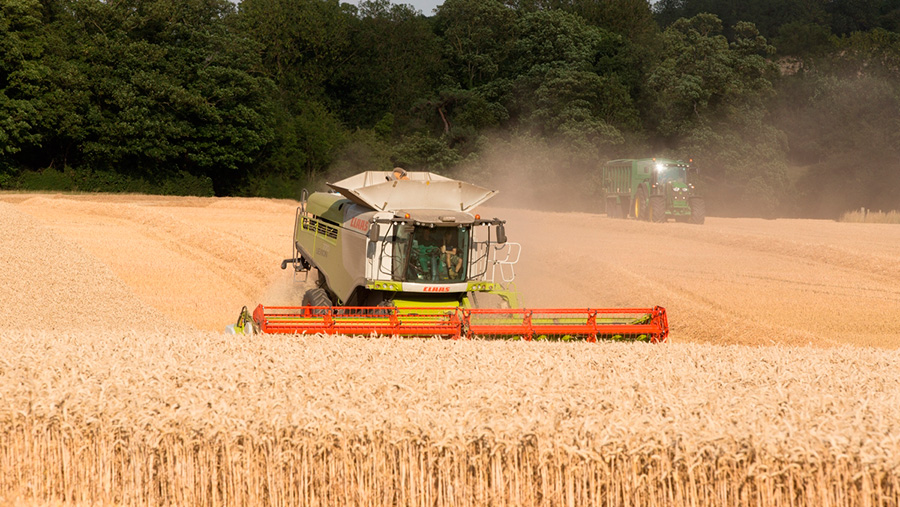
© Tim Scrivener
The fall in the pound means that UK is offering the market some of the cheapest wheat in the world.
However potential customers are sitting back, confident of relatively large carryover stocks and in the expectation of a large feed wheat crop, as quality problems emerge in regions where harvest has already begun.
The fall in sterling has cushioned the UK from a wheat price drop, says Jonathan Lane, trading director at Gleadell Agriculture.
“If it hadn’t been for that, we’d be looking at about £100/t ex-farm for November. Instead it is about £112/t (Tuesday 5 July).
See also: Brexit analysis – the path ahead for farming
“The pressure has been compounded by big sellers of French feed wheat as the crop continues to deteriorate.”
Third-country trade, especially to Asia, offers some hope, says Mr Lane. However July, August, early September business is largely done.
Euro
While UK minds have focused on what has happened to sterling, we can’t ignore the risk to the European currency, says Jack Watts, AHDB’s lead analyst in cereals and oilseeds.
While the weaker pound makes UK grain more competitive, customers whose trade is euro-based are, in turn, likely to find it more difficult to pay, as the UK’s vote to exit the EU has pushed the euro down against the US dollar.
The UK can count on two more crop years, 2016 and 2017, under the current CAP regime, so if negotiations proceed smoothly, 2018 will be the first crop produced under a new UK agriculture policy and trade terms.
Even in the current CAP regime, being a dedicated feed wheat producer carries significant risks, says Mr Watts.
“There is currently a short-term opportunity, giving time to get plans in place and be competitive.”
For example, the vote to leave could give an opportunity to displace some of the UK’s core requirement for imported milling wheat, suggests Mr Watts.
This is running stubbornly at about 1m tonnes/year and in the short term the weaker pound makes these imports more expensive.
UK production
Longer term, trade deals could mitigate against such imports.
However UK production could not expect to fully replace them, said Mr Watts.
He expects interest in cover cropping and fertility building to grow, possibly including the use of livestock in arable rotations as the agronomic challenges grow, with active ingredients being withdrawn or further restricted during the period when the UK’s exit is negotiated.
Beyond that, the UK government’s attitude will lead the direction on important issues such as GM and active ingredient approvals, although with an eye to what will be acceptable in these terms to our most important markets.
Many export destinations are challenging because of their economic background.
For example, pulse trade to Egypt and some other Middle East destinations has to be done cautiously, cargo by cargo, because buyers have restricted access to funds.
Grain market pointers
- UK wheat is competitive but in a quiet feed wheat market where customers know they will have plenty of wheat to choose from
- Sterling’s fall has protected UK growers from a wheat price drop
- Exit gives opportunity to displace some milling wheat imports with UK wheat
Oilseed rape
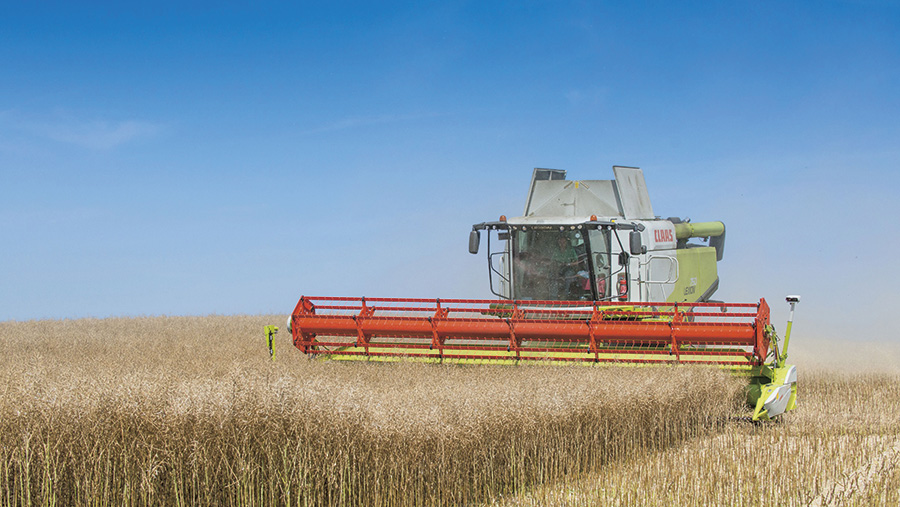
© Mike Powles/FLPA/Rex/Shutterstock
Poor crushing margins mean business is quiet and a 22m-tonne EU oilseed rape crop estimate from grain and oilseed trade body Coceral last week pushed EU rape prices down again.
Coceral’s previous estimate had been 21.6 and last year’s crop was 21.7m tonnes.
With the US soya bean area recently confirmed as the largest ever, though slightly smaller than the market was expecting, strong global production is keeping a lid on prices.
Volatility remains
However volatility remains – there is uncertainty over potential demand from China and the market has seen some big rallies and dips.
Any future UK agricultural policy will need to encompass energy crops.
The extent to which biodiesel and bioethanol might be supported is open to question.
Mr Watts cautions that decisions on cropping should be led by gross margin/ha comparisons rather than on straight price a tonne.
Risks such as flea beetle, stricter sustainability criteria and the likelihood of higher input costs for all crops as a result of the weaker pound need to be factored in too.
Potatoes
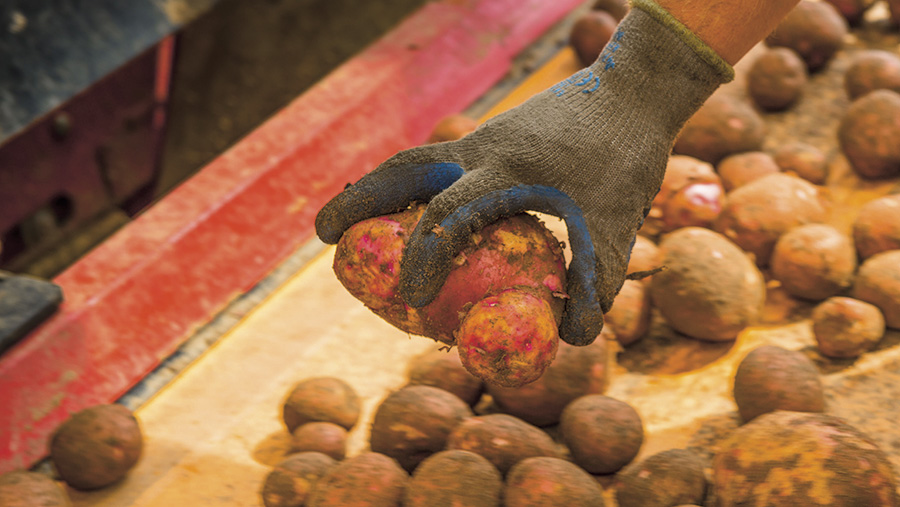
© Mike Powles/FLPA/Rex/Shutterstock
There may be some short-term impact on the potato sector as a result of sterling’s fall, with imports becoming more expensive, says Neil Cameron of Bidwells.
However the weather, crop quality and changing consumer patterns will continue to be the most important factors in this market.
Fresh potatoes are a costly, bulky import and tend to be brought in predominantly in the early part of the season, with later imports usually only featuring in any quantity in season which fail to deliver a sufficiently large home-grown crop.
Processed imports however have been growing over recent years and tend to be at the unbranded end of the market, says Mr Cameron.
Longer term and dependent upon what trading arrangements are put in place, it is in this part of the potato sector where we may see more change if the UK is give the market conditions in which to develop its processing interests further.
Such investment decisions are at least four to five years away, suggest Mr Cameron.
Labour and machinery
Access to labour is a big concern, he says, while kit is expensive and largely imported, pushing up production costs.
Dairy
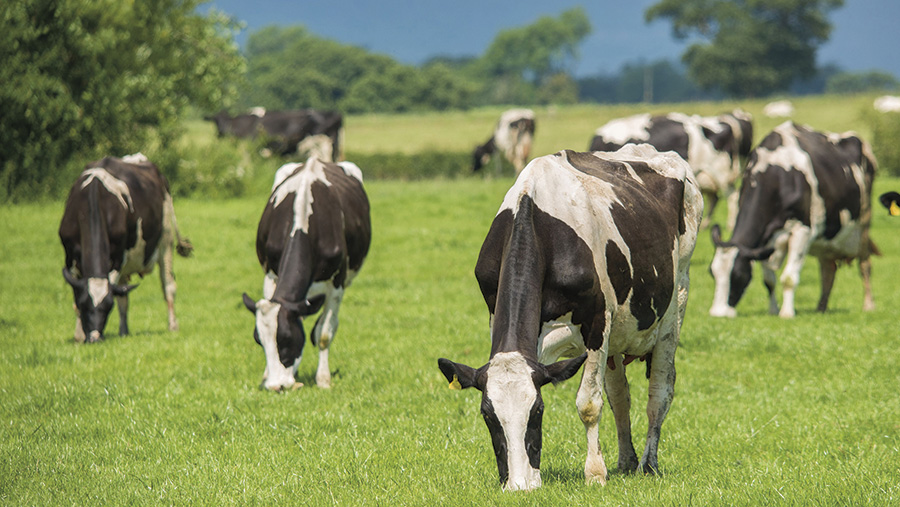
© John Everson/FLPA/Rex/Shutterstock
British farmers may benefit from the currency swings following the vote.
A weaker pound against the euro makes our products more competitive on export markets.
European butter and skim-milk powder, when converted to pence a litre, immediately became 2p/litre more expensive in sterling terms after the pound fell to just under €1.20 on 28 June, according to AHDB Dairy.
Milk price improvement
Kite Consulting estimates British milk prices could improve by 1.5-2p/litre as a result of the devaluation.
Looking more widely, the euro has also been weakening against the dollar, which makes European commodities more competitive when trading further afield, such as on the New Zealand–based Global Dairy Trade auction.
Commodity risk manager Charlie Hyland of analyst and trader INTL FC Stone said the currency had affected the powder trade, with skim-milk powder back above intervention prices.
“We have not seen much volatility on the back of [the vote],” he said.
“It does improve our competitiveness in the world market and the same at farm level in the UK, where the relative return is improving quickly.
“The physical and financial trade has been really quiet.
“A lot of the big buyers, the multinationals, are holding off from making big purchasing decisions.”
Any benefit from the currency will take time to feed into UK prices.
The 30-day notice period on farmgate milk price changes, set out in the voluntary code, means for most there is always some delay for market conditions to be reflected.
Arla’s role as the biggest milk buyer, with about 2,700 British producers, could also slow the pace.
The co-op uses a quarterly currency-smoothing mechanism for balancing prices paid to farmers who use different currencies.
Also its farmgate price is the same across seven European countries, which will make any benefit for British farmers less clear.
UK spot market
The UK spot market should show some speedy reaction, but prices had already been creeping well above 20p/litre, due to the milk production slowdown.
The improving British dairy market, with processors such as First Milk, Wyke, Glanbia and Meadow Foods announcing rises, will make the benefits of Brexit uncertainty less obvious too.
The European Commission’s milk market observatory (MMO) board met after the vote on 28 June.
The issues discussed were the same as the previous meeting, despite the surprise Brexit result.
The newly published short-term outlook expects EU production to rise 1.4% over 2016, due to higher cullings and spring weather.
The MMO also noted most experts do not expect an improvement in milk prices before September and a significant “correction” to supply was still needed.
UK production is already behind last year’s levels, with milk deliveries in the two weeks to 18 June down 6.1% on the year.
Beef
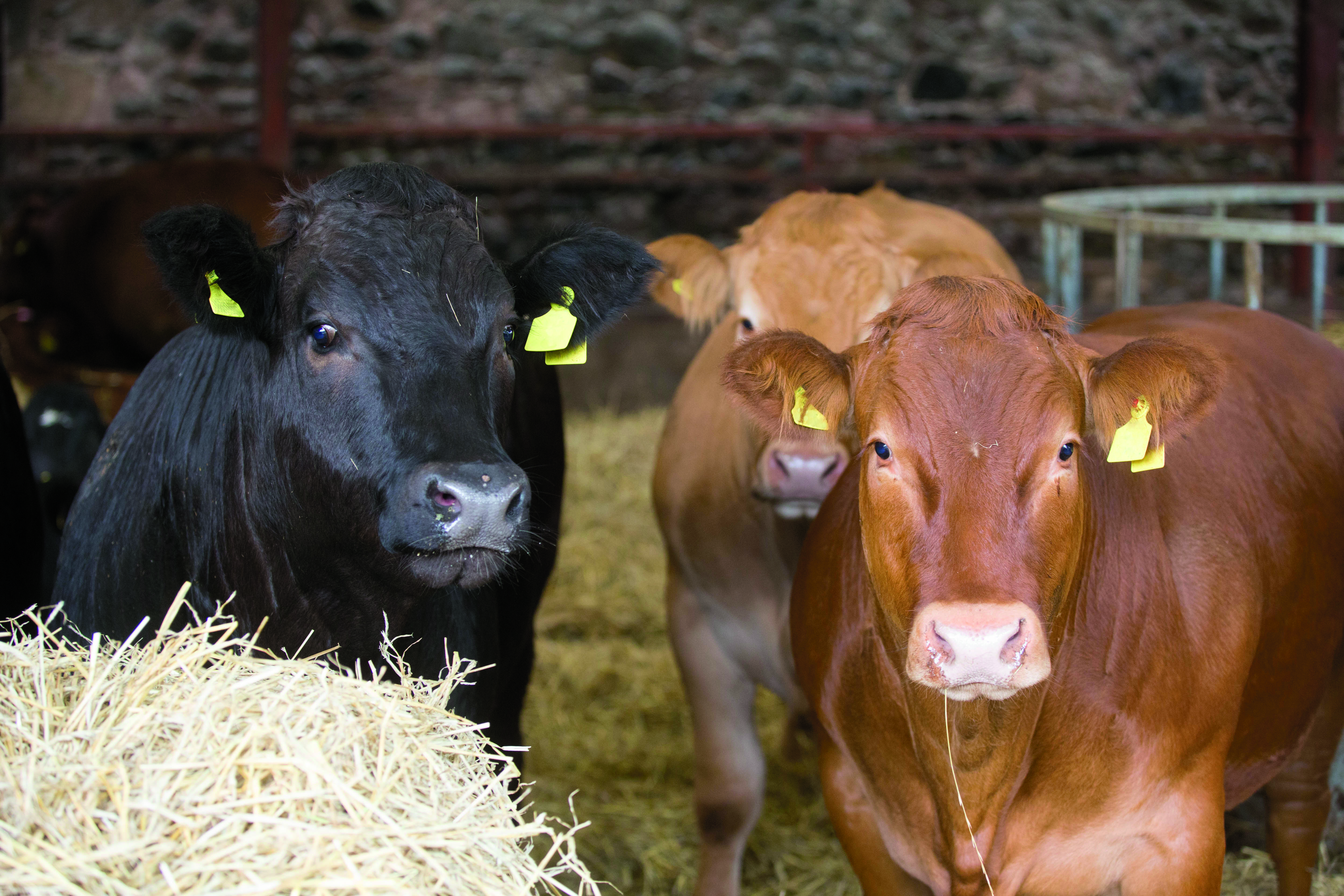
© Tim Scrivener
Beef producers may not get the sudden price boost seen in the lamb trade – but currency will be a factor in the months ahead.
Last year the UK shipped just under a fifth of its beef production abroad.
About 93% was destined for the EU – but the exposure to currency swings is not as dramatic as for other meats.
The liveweight trade, which does not dominate marketing but provides more up-to-date data, showed little immediate reaction.
Steer prices
Average British steer prices were pretty much flat at 177.6p/kg in the week to 28 June, while heifers gained 3.8p/kg on the week at 194.6p/kg.
The cow beef trade, which is more closely tied to the continent, did see a small uplift, according to AHDB Beef and Lamb.
The average cow price rose a penny to 213.7p/kg in the week to 25 June.
Stuart Ashworth, head of economics services at Quality Meat Scotland, said the currency effect would more likely be to raise the costs of importing beef from Europe.
Irish imports
The UK is only 70-75% self-sufficient in beef; Ireland supplies more than two-thirds of the imports that plug the deficit.
“There is a significant volume coming in from Ireland,” Mr Ashworth said.
“So the exchange rate will make that product more expensive on the home market.”
There is also the longer term issue of what access Irish beef will have to the UK market as a result of the negotiations on the UK’s terms of trade with the EU.
Even before the June vote, British beef imports were down 3% on the year at 83,150t in the first four months of 2016.
Exports were up 18% year-on-year over the same period.
The currency change will continue to shrink the gap between Irish and British prices.
The price for a R4 Irish steer last week was 319p/kg in sterling terms at the exchange rate on 22 June. Now a British importer would have to pay 347p/kg, based on the £1:€1.2 rate financial markets have slumped towards.
“The markets are going to be very jittery,” said Mr Ashworth.
The cattle trade as a whole continues to improve along its seasonal trend. In the week ending 25 June the British all-prime average jumped 2p/kg to 324.5p/kg. Prices remain about 20p/kg down on the year.
Supplies remain healthy, with numbers on the week up 9% on the year.
AHDB’s has forecast a 3% rise in production for the whole of 2016.
Sheepmeat
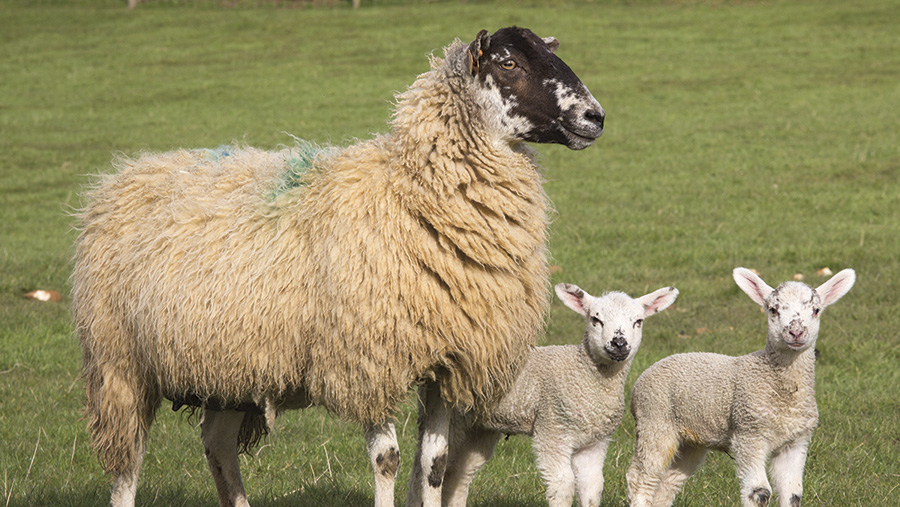
© Tim Scrivener
British sheep producers are the most plugged into the European market, but the Brexit vote has brought good news in the short term.
The new season lamb liveweight SQQ leapt 7p/kg in the week to 30 June, reaching 195.4p/kg.
This was despite market throughputs that were 17% higher than the same week in 2016.
There have been reports of farmers bringing more lambs to market and buyers being more active, in order to benefit from the volatility.
Analysts have pointed to the Brexit-linked pound plunge as the main factor.
In 2015 the UK exported more than a third of its lamb production, with 96% heading to Europe.
That means the rate at which British prices translate into euros has a big impact in that all-important market.
Last week a 40kg lamb sold liveweight averaged £74, which cost €96 for a French buyer.
At this week’s rates, the same buyer would pay €8 less.
‘Currency is key’
AHDB Beef and Lamb senior analyst Mark Kowalski said prices had been rising before the referendum, but currency was the key factor.
“The other drivers on the market would have moved [the market] the other way. We have seen throughputs at auctions going up and I cannot see there being a huge demand factor.”
Sheep producers will be watching the Brexit negotiations closely, given their tight trade ties with the continent.
One exporter who trades across northern Europe told Farmers Weekly he expected a “tough ride” trying to sell British lambs over the next few years.
He said it was not just about price, but attitude: a couple of French supermarket customers had jokingly told him the British could “get stuffed”.
The French market, which buys half of British lamb exports, has been getting tougher.
Though the trade figures are increasingly hard to trust, they showed France bought 14% less lamb from the UK in the first three months of 2016, compared with the previous year.
AHDB Livestock head of exports Jean-Pierre Garnier told the levy board’s export conference last week that farmers had to fight their corner.
He said producers needed a low tariffs and sensible non-tariff barriers, such as hygiene standards, in the UK’s trade agreement with the bloc.
Norway is a member of the European Economic Area, but even that country has high tariffs.
Selling lamb carcasses into Norway carries a 429% duty.
Mr Garnier also said there was a risk other countries with low-cost livestock production, such as Australia and New Zealand, might try to take more of Britain’s EU trade.
“We need livestock products to be high on the agenda of future negotiations,” he said.
“We need to be make sure we are top of the list and not sacrificed in bargaining.”
Watch out for
- When the UK gives notice triggering Article 50 procedure, this may provoke a further drop in the pound and market movements
- Weaker demand from the eurozone, the UK’s main food and drink export market, which is in turn further threatened by the UK’s vote to leave the EU
- Sourcing and investment decisions by food processors – currency values will affect imported or home-produced raw material costs and could lead to switches, especially given the very challenging retail background
